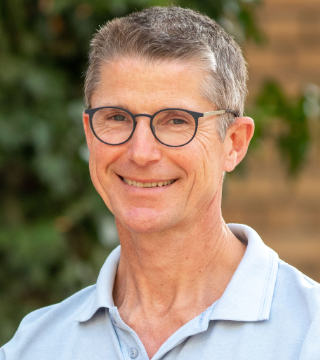Meet Sven Erik Nørholt
Using 3D technology in targeted treatment of the individual patient
How can we utilise 3D technology and artificial intelligence to plan and carry out the best possible treatment of each individual patient? This question is a fundamental research question for maxillofacial surgeon and clinical professor Sven Erik Nørholt.
“I am interested in the diagnosis and treatment of patients with jaw growth abnormalities – whether these are congenital, such as cleft lip and palate, or arise later in life as a result of fracture or disease. I conduct research into how we can use new technologies to refine treatment methods that can help each individual patient in the best possible way,” he explains.
Precision, predictability and the fewest possible side effects are keywords when Sven Erik Nørholt treats patients in the clinic and conducts research at the university. He is currently working on research projects on how to incorporate advanced 3D technology into both diagnostics and maxillofacial surgery, and how robot-controlled laser surgery can make more precise incisions in bones.
“I’m fascinated by the extent to which 3D technology can make it possible to improve the function, appearance and wellbeing of people who are living with growth disturbances and malformations in the head and jaw region,” says Sven Erik Nørholt, whose research takes place in close collaboration with maxillofacial surgeons and orthodontists at both Aarhus University and Aarhus University Hospital.
Sven Erik Nørholt, who graduated as a dentist in 1988 and received a PhD in 1998, has always had a great interest in the maxillofacial specialty – especially in relation to helping children and young people with jaw disorders.
“Children and young people with deviant appearance and poor chewing function are at high risk of developing both discomfort and pain, but also poor wellbeing in general. The development of better treatment methods should therefore be given a high priority,” says Sven Erik Nørholt, who works both as a clinical professor at the Department of Dentistry and Oral Health and as head dentist at Aarhus University Hospital.
“The daily contact with patients and their families is extremely rewarding, and it confirms the need for continuous research into and further refinement of the best possible treatment methods,” says Sven Erik Nørholt.
